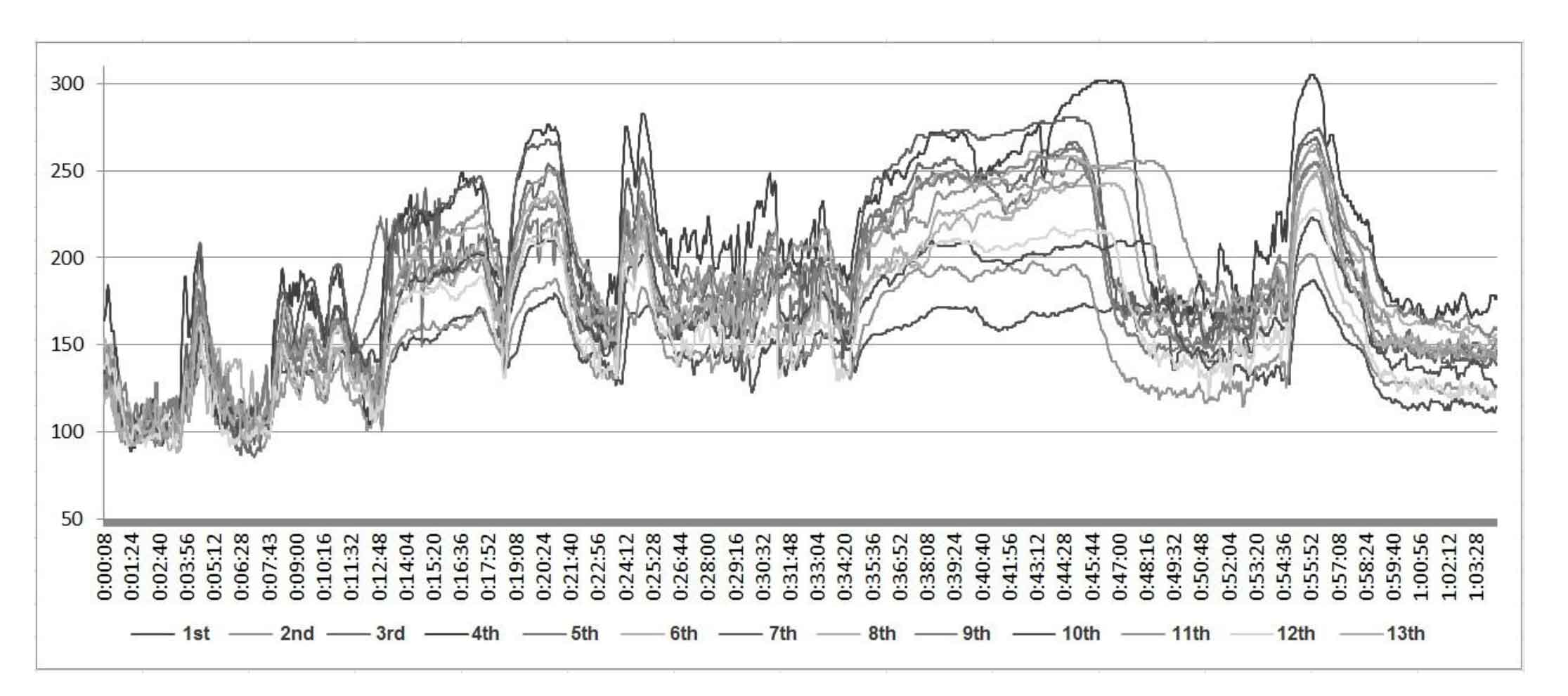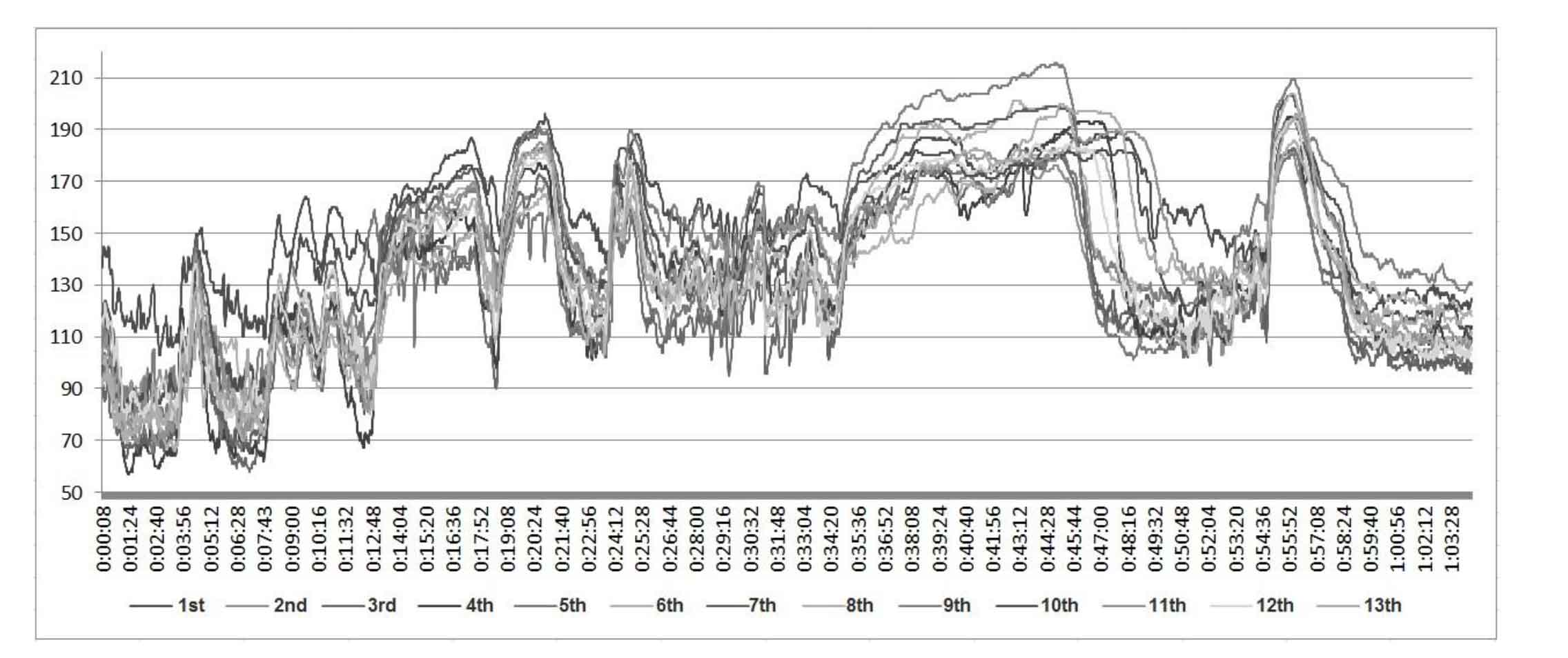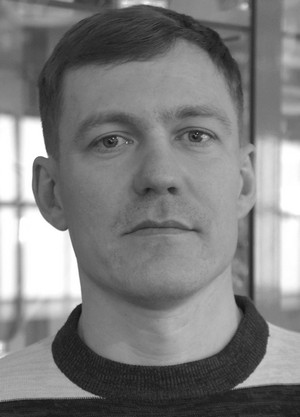Comparative analysis of physical load intensity in absolute and relative heart rate rates using heart rate monitors
Фотографии:
ˑ:
E.A. Vlasov
Professor, Dr.Med. V.Yu. Lebedinskiy
National Research Irkutsk State Technical University, Irkutsk
Keywords: heart rate monitor, heart rate, students, physical training, team system, telemetry, accelerometer.
Introduction. As of today, the search for the ways to strengthen health of children, adolescents and young people is one of the focus areas of science in the field of physical culture and sports, and for this purpose it is necessary to develop the most accurate and informative tool for monitoring the functional state of the given contingent. At the same time, the university system of physical education is in short supply of methods of in-depth integrated control over the exposure of physical exercises on the body of students during traditional Physical Education lessons, as opposed to the task-oriented examination of athletes conducted separately and in vitro [4].
One of the focus areas of the Scientific-Research Laboratory "Physical Health Monitoring" is biomedical support of the training process. In order to carry out the integrated control over the functional state of those involved in physical education, it is essential to use the methods of remote monitoring explicitly during the lessons [2, 3]. For that very reason we have purchased and are now successfully using the telemetry team system, which consists of 20 heart rate monitors working remotely and synchronously.
Objective of the study was to conduct a comparative analysis of the physical load intensity in absolute and relative values of heart rate (HR) using modern control methods.
Methods and structure of the study. Pulse is an indirect indicator of the body state. By its rate we can estimate load, recovery status, potential disease and general state of health. This method is very popular for it is easy enough to measure HR. Simple manual pulse measurement is often inaccurate due to some reasons: carelessness of students, lack of practical knowledge, etc. Moreover, such measurements are taken between exercises and do not always picture exactly the body reaction when performing the exercise.
At the same time, using the telemetry team system we can accurately analyze motor density of lessons, calculate average HR for a group at a certain moment of exercising or average HR for each student over the entire period of exercising, identify the fittest students and adjust the load for those who perform exercises with insufficient intensity.
Besides, the department specialists have developed a tool for analyzing the human body's response to physical load.
This is a percentage ratio of the HR at rest to the actual HR at a certain moment of exercising (Table 1) or to the average values HR over the entire period of exercising (could be a series of exercises, or a lesson as a whole).
Table 1. Absolute and relative values of HR during exercises of various intensity levels
|
Exercise |
Students’ order numbers |
||||||||||||
|
1st |
2nd |
3rd |
4th |
5th |
6th |
7th |
8th |
9th |
10th |
11th |
12th |
13th |
|
|
Average at rest |
109 |
90 |
68 |
64 |
71 |
77 |
71 |
75 |
82 |
87 |
74 |
85 |
78 |
|
100 |
100 |
100 |
100 |
100 |
100 |
100 |
100 |
100 |
100 |
100 |
100 |
100 |
|
|
Average (step exercises) |
146 |
117 |
102 |
112 |
108 |
120 |
121 |
101 |
119 |
140 |
111 |
119 |
107 |
|
134 |
130 |
150 |
175 |
152 |
156 |
170 |
135 |
146 |
161 |
151 |
140 |
138 |
|
|
Average (2km cross country race) |
182 |
172 |
169 |
171 |
170 |
189 |
192 |
156 |
203 |
178 |
177 |
177 |
179 |
|
167 |
191 |
249 |
267 |
239 |
245 |
270 |
208 |
248 |
205 |
239 |
208 |
229 |
|
|
Average (recovery at the end of the lesson) |
126 |
112 |
100 |
107 |
104 |
122 |
100 |
109 |
133 |
118 |
107 |
105 |
117 |
|
116 |
124 |
147 |
167 |
146 |
158 |
141 |
145 |
162 |
136 |
145 |
124 |
150 |
|
|
Average during the lesson |
158 |
132 |
125 |
133 |
127 |
144 |
137 |
129 |
151 |
146 |
142 |
136 |
139 |
|
145 |
147 |
183 |
207 |
179 |
187 |
194 |
172 |
185 |
168 |
192 |
160 |
178 |
|
As part of this study, we conducted not the developmental or training session, but the diagnostic one, with the involvement of first-year male students, who fit into the first functional health group. During one lesson 13 students were subject to the functional test of 20 sit-ups and physical exercises of various intensity levels. In process, we did real-time measurements of the students’ cardiovascular system characteristics, followed by computer processing of the data obtained for each student: calculation of functional test results, determination of the peak HR values, average HR values during specific exercises, and assessment of relative values for each type of activity.
Results and discussion. The diagrams of the cardiovascular system reaction as a percentage of the resting state (Fig. 1) reveal some of its trends.

Fig. 1. Each student's pulsometry in relative values of HR
Thus, in the students with the low physical fitness level (high HR at rest) they become less pronounced and more smoothed at the level of 170%, while in those with the low HR at rest, on the contrary – reach 300% when exposed to physical load. However, there are students whose diagrams are in the upper lines both in absolute HR values and percentagewise (for instance, students #4, 11, and 13). Another interesting feature is that during strenuous physical loads its peak values are distributed with a greater gradation, as opposed to its absolute values, where, on the contrary, they are grouped at the level of the upper limits.
For better understanding of the lesson structure we recorded its chronometry: 0:00.00 - rest before the functional test; 0:03.10 - 20 sit-ups per 30 seconds; 0:04.00 - rest (recovery rate registration); 0:07.25 – step exercises; 0:12.31 – running in a line (two 400m laps); 0:17.08 - walking + breathing exercises; 0:18.31 - special running exercises (SRE); 0:20.46 - walking + breathing exercises; 0:23.28 – driving to acceleration for 40 m, two reps; 0:26.08 - general conditioning exercises (GCE); 0:34.07 - 2km cross country race (the following task was set: "To run two cross country laps (1 km) at comfortable speed"); 0:49.00 - breathing exercises; 0:54.29 – 400 m acceleration; 0:55.50 – low-intensity exercises and breathing exercises; 1:03.44 - end of the lesson.
The computer analysis of the functional test (Table 2) revealed that HR recovers in 1 minute only in two students (4th and 12th), in 1.5 minute – in seven students, and in 2 minutes and more – in six athletes (1st, 6th, 8th, 9th, 11th, and 13th) - low physical fitness level.
Table 2. Results of functional testing using modern HR monitoring methods and time of covering 2km race distance
|
|
Students’ order numbers |
||||||||||||
|
1st |
2nd |
3rd |
4th |
5th |
6th |
7th |
8th |
9th |
10th |
11th |
12th |
13th |
|
|
HR at rest |
109 |
90 |
68 |
64 |
71 |
77 |
71 |
75 |
82 |
87 |
74 |
85 |
78 |
|
HR after 20 sit-ups |
152 |
127 |
126 |
130 |
129 |
131 |
148 |
125 |
144 |
143 |
142 |
138 |
129 |
|
HR increase in percent |
39 |
41 |
85 |
103 |
82 |
70 |
108 |
67 |
76 |
64 |
92 |
62 |
65 |
|
Recovery time |
3.00 |
1.25 |
1.18 |
0.58 |
1.34 |
2.24 |
1.30 |
2.10 |
1.49 |
1.39 |
2.15 |
1.00 |
1.53 |
|
Result of 2km run |
13.09 |
10.21 |
10.09 |
12.18 |
09.49 |
10.35 |
10.28 |
11.50 |
09.56 |
13.28 |
13.58 |
11.34 |
12.42 |
Therefore, the average level of HR recovery in the group after 20 sit-ups per 30 seconds was 1 minute 45 seconds. Taking into consideration that the study involved healthy students with no significant functional abnormalities, and that the normal HR recovery rate for healthy untrained adolescents is up to 2 minutes [1, 6], they were proved to be healthy enough, but had a relatively low physical fitness level. The average heart rate increase after finishing the sit-ups exercises equals 74%, which corresponds to the upper limit of normal for healthy untrained adolescents. High values of HR at rest are disturbing, thus, HR below 75 bpm is registered only in six students (3rd, 4th, 5th, 7th, 8th, 11th).

Fig. 2. Pulsometry in each student in absolute values of HR
Based on the 2km cross country race distance results (Table 2), the students were divided into two groups: the first one - less than 11 minutes (2nd, 3rd, 5th, 6th, 7th, 9th ) and second one – more than 11 minutes (1st, 4th, 8th, 10th, 11th, 12th, 13th). In the second group of students, the average HR was registered at the same level - 170-180 bpm. This suggests that students performed the exercise correctly (ran at high speed, with about 70% of the maximum capacity), while students of the first group had a substantial gap in their HR values, which is clearly seen in Figure 2 and Table 1. Accordingly, two sub-groups were formed based on these data: three students (6th, 7th, 9th) with the values of 189, 192 and 203, and three students (2nd, 3rd, 5th) with the values of 169, 170 and 172 bpm, respectively. According to the survey, it can be concluded that the first subgroup students (6th, 7th, 9th) had extremely low functional capabilities, and those of the second subgroup (2nd, 3rd, 5th) had high functional capabilities. The capabilities of the second group students (1st, 4th, 8th, 10th, 11th, 12th, 13th) were relatively average.
Conclusion. It was found that each study group attending each physical education lesson was made of three different categories of students. To improve the lesson efficiency it is necessary to comply with a certain gradation when dosing exercises both by volume and intensity. In this regard, we need to develop domestic (more affordable) prototypes of such command systems for monitoring the functional parameters and their full implementation explicitly in the university physical education process, and not only in elite athletic training.
References
- Apanasenko G.L. Meditsinskaya valeologiya: Seriya «Gippokrat» (Medical valueology: "Hippocrates" Series) / G.L. Apanasenko, L.A. Popova. – Rostov-on-Don: Feniks, 2000. – 248 p.
- Babicheva I.V. Issledovanie intensivnosti nagruzki vo vremya urokov po fizicheskomu vospitaniyu s ispol'zovaniem monitora serdechnogo ritma (Study of load intensity during physical education lessons using heart rate monitor) / I.V. Babicheva, A.A. Safronov // Molodoy ucheny. – 2013. – № 6. – P. 788-790.
- Bomin V.A. Kontrol' funktsional'nogo sostoyaniya v trenirovochnom protsesse s ispol'zovaniem telemetricheskoy sistemy (Monitoring of functional state in training process using telemetry system) / V.A. Bomin, A.I. Rakotsa, V.Yu. Lebedinskiy // Teoriya i praktika fiz. kultury. – 2011. – № 6. – P. 78-82.
- Vlasov E.A. Organizatsiya protsessa po distsipline «Fizicheskaya kul'tura» s ispol'zovaniem sovremennykh sredstv kontrolya ChSS u studentov vuzov (Organization of "Physical Education" process using modern heart rate control methods among university students) / E.A. Vlasov, V.Yu. Lebedinskiy, M.M. Kolokoltsev // Teoriya i praktika fiz. kultury. – 2014. – № 6. – P. 7-9.
- Lubysheva L.I. Pedagogicheskie usloviya formirovaniya sportivnoy kul'tury lichnosti v obshcheobrazovatel'noy shkole (Pedagogical conditions of personal sports culture formation in comprehensive school) / L.I. Lubysheva // Teoriya i praktika fiz. kultury. – 2011. – № 5. – P. 36-41.
- Monitoring zdorov'ya sub'ektov obrazovatel'nogo protsessa v vuzakh. «Pasport zdorov'a»: monografiya (Health monitoring of subjects of uniersity educational process. "Health Passport": monograph) / Ed. by prof., Dr.Med. V.Yu. Lebedinskiy. – Irkutsk: Publishing House of Irkutsk State Technical University, 2008. – 268 p.
Abstract.
The article describes the results of the application of heart rate monitors in the physical education course, namely a command system that can record the heart rate of up to 20 people at a time. The study was conducted at the premises of the Physical Education Department of National Research Irkutsk State Technical University with the male students of the first functional health group. There was described a method of determining the functional capabilities of students at physical education lessons with the use of heart rate monitors. In addition, there were considered several methods of recording the intensity and impact of physical exercises on the student's body, and some regular human body's responses to physical exercises in case of using such a method were identified. Computer processing of the functional test (20 sit-ups) results was performed to determine the exact recovery time in seconds after a standard exercise.




 Журнал "THEORY AND PRACTICE
Журнал "THEORY AND PRACTICE